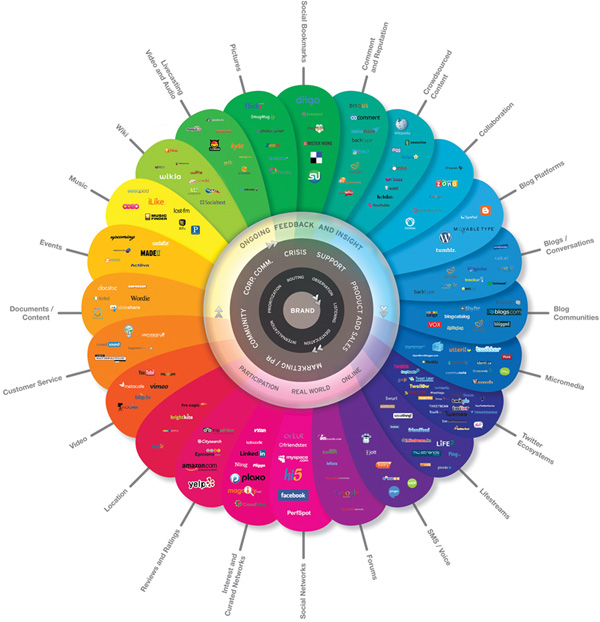The 17 Rules of Social Media Optimization
 Image courtesy of theconversationprism.com
Image courtesy of theconversationprism.com
By definition, Social Media Optimization (SMO) is the process of optimizing social media marketing activities in order to attract traffic to a specific web presence.
Much like Search Engine Optimization, SMO activities can be split into two method sets:
– Onsite SMO is the process of making a web presence, or website, socially enabled. This is achieved by using a combination of sharing tools and standards such as RSS feeds, sharing buttons, links to social profiles and pages… Onsite SMO ensures total integration between the website and major social networks.
– Offsite SMO is the process of engaging in promotional practices with the aim of attracting social traffic back to the website. Offsite SMO can range from social media bookmarking to blog and forum engagements. A traffic-generating viral Facebook status update is an example of offsite SMO.
Social Media Optimization practices have been used since the inception and proliferation of social communities. In 2006, members of the digital marketing community collaborated on 17 rules for “social media optimization”. Although the tools have evolved and changed, the fundamental behaviors are still valid.
Here are the 17 rules of Social Media Optimization:
1. Increase your linkability
2. Make tagging and bookmarking easy
3. Reward inbound links
4. Help your content travel
5. Encourage the mashup
6. Be a user resource, even if it doesn’t help you
7. Reward helpful and valuable users
8. Participate
9. Know how to target your audience
10. Create content
11. Be real
12. Don’t forget your roots, be humble
13. Don’t be afraid to try new things, stay fresh
14. Develop a SMO strategy
15. Choose your SMO tactics wisely
16. Make SMO part of your process and best practices
17. Don’t be afraid to let go of a message or idea and let others own it










Leave a Reply
Want to join the discussion?Feel free to contribute!